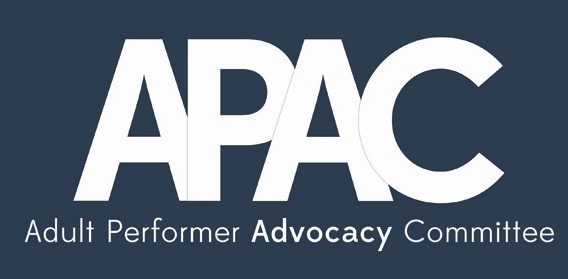To combat the spread of HIV, health officials plan to circumcise 20 million men in Africa, but some have concerns about the aftermath.
Marvin is 22 years old, single and — like many men of his age — thinking about girlfriends. But for the next six weeks, he will have to give his love life a rest. On this sunny morning in the Zambian capital, Lusaka, Marvin is waiting to get circumcised. Along with three of his friends, he sits tensely on a bench outside the operating theater, a room usually used for abortions. Are they nervous? Marvin cracks a wide smile. “A little,” he says.
In Lusaka, young men like Marvin have grown up with daily reminders of the risks that can accompany sexual relationships. For years, billboards and adverts painted on walls have espoused the importance of safe sex and testing for HIV, which currently infects more than one in five Lusaka residents. But more recently, a new message has been popping up in public spaces and the media: a call for men to get circumcised to reduce their chances of contracting the virus. Marvin’s friends told him about the procedure. “A lot of them have been circumcised so I thought of doing the same thing,” he says, adding that it may increase his odds with women. “I hear that the first thing they ask you is ‘have you been circumcised?’” he says. But, ultimately, he hopes the surgery will help him “just to stay healthy”.
Scenes like this have become familiar across much of southern and eastern Africa. Since 2007, 14 nations have taken part in a massive public-health campaign aimed at circumcising millions of men in an attempt to drastically reduce the spread of HIV. About 3 million men in the region have been circumcised since the start of the campaign, and the initiative was made a high priority in late 2011 by the World Health Organization (WHO), the Joint United Nations Programme on HIV/AIDS (UNAIDS) and the US President’s Emergency Plan for AIDS Relief (PEPFAR) — which are funding part of the program. The rest is being provided by the Bill & Melinda Gates Foundation, the World Bank and other global health organizations. The targets are ambitious: 80% of men of reproductive age in these countries need to be circumcised by 2015. That means more than 20 million circumcisions.
If these efforts succeed, the payoff could be considerable. Reaching the 80% goal could cut the number of new HIV infections in the target countries by as much as half, says Bertran Auvert, a public-health specialist at the University of Versailles Saint-Quentin-en-Yvelines in Paris. “The goal is to have a huge impact on the overall HIV epidemic in Africa.”
But some scientists worry that the benefits reported for circumcision in clinical trials will not bear out to the same degree when scaled up to tackle a messy epidemic that is spread as much through behavior as biology. In particular, they say that men are getting mixed messages about the benefits of circumcision. Another concern is the effect on women, who gain no direct protection from the circumcision campaign, and may even face greater risk. Critics say the programs could increase the risk of HIV infection in some populations by encouraging people to engage in risky sexual behaviors, such as forgoing condoms.
“It’s only been shown to decrease to some degree transmission from the female to the male, and yet we are acting as if it’s the only thing to do,” says Philip Thuma, a doctor who runs the Malaria Institute at Macha in southern Zambia. “Our job as scientists is to step back and be a bit skeptical. Should we really be putting this much emphasis on something at the expense of other things that are just as important?”
The idea that circumcision might reduce the risk of HIV infection is often traced back to Valiere Alcena, a physician now at the Albert Einstein College of Medicine in New York City, who noted in 1986 that the men of Haiti and Central Africa are usually uncircumcised and as a result often develop lesions on the foreskin that serve as a potential entry point for AIDS. The idea was cemented when a landmark study in 1989 showed that of some 400 Kenyan men who visited a group of prostitutes with high rates of HIV, those who were not circumcised had more than eight times the risk of becoming infected than those who were. Michel Garenne, a demographer at the Pasteur Institute in Paris, remembers being at a meeting when the paper was first presented, and it seemed to make sense. “I was working in Senegal, where there was very little AIDS and a lot of circumcision, so I became quite convinced that something was going on,” he says.
But others disagreed, arguing that some populations did not fit this pattern and that the correlation could be explained by other factors relating to the prevalence of circumcision, such as religious practice. Garenne himself became skeptical. In 1994, he was working in South Africa, where he found a huge HIV epidemic even though many men were circumcised. “I changed my mind and became convinced that circumcision will never help in controlling HIV/AIDS,” he says.
Those who did believe in the protective effect of circumcision called for a systematic analysis to settle the matter. Three randomized clinical trials were carried out in southern Africa between 2002 and 2007. One study, led by Auvert, offered medical circumcision to men in a region of South Africa and compared them with a non-circumcised group. After 21 months, there were 20 cases of HIV in the circumcised group and 49 among the uncircumcised men, equating to a 60% reduction in HIV risk.
Two other trials, in Kenya and Uganda, produced similar results. “It’s extraordinary in any public-health measure that you get such consistency of results,” says Robert Bailey, an epidemiologist at the University of Illinois at Chicago, who led the Kenyan study.
The WHO also found the consistency compelling and declared the results “an important landmark in the history of HIV prevention”. In 2007, the WHO, UNAIDS and PEPFAR recommended implementing voluntary medical male circumcision (VMMC) in 14 high-risk African countries.
Zambia, with its high prevalence of HIV, low circumcision rates and mixed attitudes towards circumcision, is a microcosm of the broader campaign. During the past five years, it has seen the progressive roll-out of catchy, pro-circumcision slogans on posters, television and radio campaigns. Health-service providers have also developed outreach programs to spread the message.
At the clinic where Marvin is waiting, visitors are greeted by an advertisement for its services: a silhouette of a man standing proudly with his hands hooked inside his belt and, above it, a slogan reading: “Male Circumcision, a man who cares”. Clinics that perform the procedure hope the belt-hook stance will become an unspoken symbol, a way for men to implicitly communicate their circumcised status, which is increasingly viewed as an attractive attribute.
If the campaigns can convince enough men to take part, the program could significantly reduce HIV-transmission rates, according to a number of modeling studies. These project that circumcising 80% of men aged 15–49 years old in targeted countries by 2015 would decrease the incidence of HIV by 30–50% over 10 years, amounting to some 3.4 million fewer new infections. Carrying out these 20.3 million circumcisions by 2015, plus an additional 8.4 million over the following 10 years, would cost about US$2 billion, but would potentially save $16.5 billion by 2025 owing to avoided treatment and care costs.
There may be other benefits too. Before men undergo voluntary medical circumcision, many get an HIV test, which means more cases of HIV will be picked up, and thus more men will be referred for treatment. “I think circumcision is going to have a very significant impact because it’s being delivered as a package,” Bailey says.
A big part of that package is a one-on-one counselling session run by people such as Jonathan Kabanda, a counselor for the Society for Family Health in Livingstone, about five hours’ drive south of Lusaka. It is his job to make sure that men who come in for circumcision understand the benefits and the risks, not only for themselves but also for their partners. On a Saturday morning, Kabanda sits down and arranges his materials, among them three large wooden phalluses — one equipped with a retractable fabric foreskin — and some condoms. He pulls out a small flip chart that details different matters relating to circumcision — starting with how the foreskin can increase the transmission of HIV and leading on to the benefits and limitations of circumcision.
Those who support the campaigns, including the WHO, PEPFAR and the authors of the clinical trials, stress the importance of making sure that patients understand that circumcision provides limited protection and that men should continue to use condoms. But critics ask whether the message is getting through. There is certainly room for confusion. Although Kabanda’s presentation is thorough, one page of the flip chart, titled ‘MC does not offer 100% protection’ shows a picture of a man chasing two women down the street while throwing his condoms away. Other benefits are overstated: “You are preventing your partner from cervical cancer,” Kabanda says, when, in fact, the reduction in risk is far from complete.
Outside the clinic in Lusaka, it is clear Marvin has also received mixed messages from his counseling session. “We were told there was a sixty-something per cent of being … I don’t know if it’s from HIV or some sexually transmitted disease,” he says. “And the 45%, I don’t know what it is; I didn’t get much about that. I think I’ll try to ask later.”
Many men may face similar confusion. As part of the procedure, participants get only one counseling session on the matter of circumcision and one with their HIV test. By contrast, the men in the clinical trials had sessions before and after circumcision, and every six months during the 21-month follow-up period. Some public-health advocates argue that the protocols used in the trials should be replicated closely in the campaigns, otherwise they will not be as effective. “When technologies like male circumcision are demonstrated effective, everybody forgets about the rest of the protocol and just looks at the medical procedure,” says Seth Kalichman, a clinical psychologist at the University of Connecticut in Storrs who studies behavioral responses to HIV-prevention campaigns. “We need to think about the standard of care within which a procedure is implemented if we’re going to hope to get the effects that we saw in the trial.”
However, in a campaign that aims to reach millions of men, it would be hard to get participants to return for regular counseling. And some researchers, such as Auvert, dismiss the importance of counseling, arguing that it has little impact on behavior. “If counseling was enough to change sexual behavior to reduce the risk of acquiring HIV, we would have stopped the HIV epidemic in Africa a long time ago,” he says.
The question of behavior has become a crucial one in the debate over circumcision. A chief concern is that men and women who believe that they are less likely to acquire HIV will engage in more risky sexual behavior. This means that circumcision “could have the opposite effect in the long run”, Garenne says. “People might be more likely to get HIV than if they were not circumcised at all.”
Studies of this phenomenon — known as risk compensation — are just starting to shed light on how circumcision alters behavior, and so far the findings are mixed. In one survey conducted in Kenya directly before the circumcision scale-up took place, Bailey and his colleagues reported that one-fifth of men and women they interviewed said that condom use is less necessary and that HIV is a less serious threat because male circumcision is available.
These misconceptions could put women at particular risk. Erika Layer, a health-communications researchers at the Johns Hopkins University in Baltimore, Maryland, explored that possibility by interviewing 33 women following a circumcision campaign in the city of Iringa in Tanzania. She found an overwhelming preference for circumcised men; women believed them to be cleaner and better educated. Some women also assumed — incorrectly — that the reduced risk of contracting HIV applied to women, too. As one woman who was interviewed for the study put it: “Circumcised men who are HIV-positive can have sex with women and the women will not get the infection easily.”
Much of the research on risk compensation relies on self-reported behaviors and often involves qualitative studies. But Layer’s interviews showed consistent misunderstandings about circumcision, a finding borne out by studies in other countries that suggest women are less likely to require circumcised men to use a condom. “There is evidence in South Africa, Kenya and Tanzania that shows that generally women are overstating the benefits of circumcision and believe the risk to be lower than it actually is,” she says.
Other studies, however, suggest that circumcision does not lead to more risky behavior by men and women. Earlier this year, Auvert published findings from a survey in the same region as his original trial in 2005. He found that despite a high uptake of circumcision, there was no reported difference in sexual behavior — for instance in condom use or number of partners — between circumcised and uncircumcised men, and the estimated HIV incidence rate was around 60% lower among the circumcised group. Similarly, when Bailey and his colleagues did a follow-up study in Kenya, they found no increase in risk associated with the circumcision.
Researchers are at odds over the implications. “Any public-health measure will have the potential for risk compensation, but there is no evidence at all that risk compensation is taking place and indeed there is some evidence that the opposite is occurring,” Bailey says.
Kalichman disagrees. He believes that men are getting mixed messages, and that it doesn’t make sense that they would agree to circumcision if they were going to consistently use condoms, which offer a much higher level of protection. “Why bother with the procedure if you have to continue to use condoms?” he asks. “The whole point is, ‘if I have the procedure I don’t need to’.”
The take-home message on risk compensation, he says, is that “we don’t know the extent of it and we also don’t know the impact of it”. It is possible, he adds, that the overall effect is minor because the 60% risk-reduction offered by circumcision is already so substantial.
Nonetheless, Layer says it is important to make sure women are also targeted by clear messages about the limitations of circumcision. “If we do a little bit more to try to engage women I think we could reduce the immediate and the long-term risk for both women and men,” she says.
Circumcision advocates say that in the long run, a general reduction in HIV prevalence in the population will ultimately benefit women, even if some women are placed at greater risk in the short term. “I am absolutely convinced that some women will become HIV positive because of the circumcision of their partners,” says Auvert. However, he adds that he will publish some preliminary results soon showing that the impact on women is extremely small. “We are not concerned,” he says.
The issue of balancing individual risks against widespread benefits also comes up in studies looking at how many men have sex during the healing period after circumcision, when open wounds and unhealed stitches increase the risk of transmission. In the counseling session, men are told to abstain from sex for six weeks or, if they can’t wait, to use a condom. However, a study by Paul Hewett of the Population Council in Lusaka and his colleagues found that around one-quarter of men said they resumed sex prematurely; of those, 82% engaged in at least one act of unprotected sex, and a number had unprotected intercourse with two or more partners. When the team modeled the effect of this on HIV transmission, it estimated that if 61,000 men were circumcised in one year, early resumption of sex would result in a total of 69 extra HIV infections. But the overall net effect was protective, with 230 fewer HIV infections in one year, predominantly among men.
Both critics and advocates of the circumcision campaigns agree that it will be a struggle to reach the 20-million mark by 2015, given that so far countries have only reached 15% of that overall goal. At health clinics across Zambia, much of the conversation is about targets, says Layer. “This seems to be the trend — do whatever it takes to get men in and out that door,” she says. So circumcision providers are coming up with innovative ways to recruit more men. The US embassy in Zambia has launched a new effort to work with chiefs of traditionally non-circumcising tribes in the hope that they will “convince their own people that even though this isn’t a part of their historic tradition this is the right choice”, says Mark Storella, the US ambassador to Zambia. And mobile clinics travel to hard-to-reach areas to recruit men. “There’s a lot of pressure right now in this country because of PEPFAR and others,” says Thuma.
The recruitment drive is happening across the region. In Kenya, some service providers are even offering ‘moonlight circumcisions’ at night, or financial incentives for referrals. More money is also being invested, but this has put significant pressure on local service providers to operate on more men. The Bill & Melinda Gates Foundation, based in Seattle, Washington, has implemented a pay-for-performance model in Zambia, for instance, in which organizations are reimbursed on the basis of their ability to reach a target number of circumcisions. “I think you have to be concerned about the impact on quality of such an incentives approach,” says one person familiar with the program who wished to remain anonymous. He wonders whether it could cause circumcision providers to cut costs for other essential services, such as counseling. In a statement to Nature, Sema Sgaier, a senior program officer with the Gates Foundation, wrote “to ensure that VMMC delivery does not affect established standards of care, it is always delivered as one component of a comprehensive package of services”. These include HIV counseling and testing as well as screening and treatment for other sexually transmitted diseases.
Everybody from donors to doctors in the clinic agrees that the circumcision effort must be part of a broader strategy to strangle Africa’s HIV epidemic. And although the 20-million goal remains distant, the campaigns could still bring major benefits, says Bailey. “Even if you don’t reach the 80% target that’s not to say you’re not going to have a large impact on the number of new infections,” he says. “Every circumcision still has a preventive effect.”
For people living in the epicentre of the HIV epidemic, that protective effect — however limited — is an attractive offering. Marvin, for one, is confident in his decision. “I think, for me,” he says, “it’s going to be a good thing.”
Nature 503, 182–185 14 November 2013






